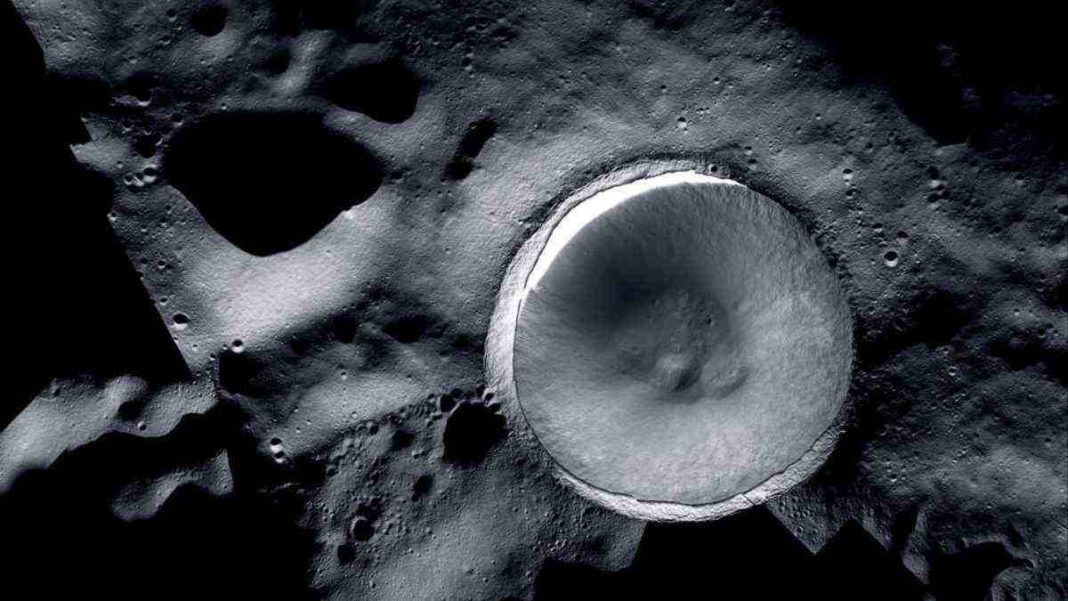UNITED STATES: In a remarkable display of teamwork among space-based instruments, NASA’s Lunar Reconnaissance Orbiter Camera (LROC) and ShadowCam, aboard the Korea Aerospace Research Institute’s Danuri spacecraft, have unveiled stunning new insights into the enigmatic lunar South Pole region.
The collaborative effort has produced a mosaic of Shackleton Crater, shedding light on both the brightest and darkest corners of Earth’s celestial neighbor.
The LROC, a stalwart lunar observer operational since 2009, has long been celebrated for its ability to capture high-resolution images of the lunar surface. However, its capabilities have limits when it comes to photographing areas that are perpetually shrouded in darkness, known as permanently shadowed regions.
Enter ShadowCam, a technological marvel developed by Malin Space Science Systems and Arizona State University, boasting an astounding 200-times greater light sensitivity than its LROC counterpart.
ShadowCam, specially designed for the challenging conditions of lunar darkness, relies on reflected sunlight from the lunar landscape or even Earth itself to snap images within the Moon’s shadowy realms.
This remarkable sensitivity allows it to capture details and features that have remained hidden from LROC’s view. While ShadowCam’s prowess is unmatched in shadowed terrain, its sensitivity proves a drawback in directly illuminated areas, rendering results oversaturated with light.
Scientists have ingeniously harnessed the strengths of both cameras by tailoring their use to specific lighting conditions found near the lunar poles. The result is a comprehensive visual map that paints a vivid picture of the South Pole’s diverse terrain.
Shackleton Crater’s interior floor and walls, notoriously dimly lit, come to life in remarkable detail thanks to ShadowCam’s imagery. Meanwhile, the sunlit areas of the crater, including its rim and flanks, shine brilliantly in images collected by LROC.
The significance of this achievement extends far beyond stunning lunar vistas. The lunar South Pole region is a focal point of scientific interest and exploration. It remains uncharted by human astronauts, and scientists believe it harbors treasures of immense value.
Foremost among these are suspected ice deposits and frozen volatiles that have endured for eons. The study of these ice deposits could rewrite our understanding of the Moon’s history and its role in the broader story of our solar system.
Moreover, the hydrogen and oxygen locked within these frozen caches could be vital resources for future lunar missions, potentially serving as rocket fuel or life support systems.
The newfound clarity in mapping the lunar South Pole region offers invaluable insights for forthcoming surface exploration initiatives.
NASA’s Volatiles Investigating Polar Exploration Rover (VIPER) and the Artemis missions, poised to return humans to the lunar surface and establish a long-term presence, will benefit immensely from this enhanced understanding of the region’s complexities and resource potential.
Also Read: Russia’s Luna 25 Mission Aims to Beat India’s Chandrayaan-3 to Lunar South Pole



